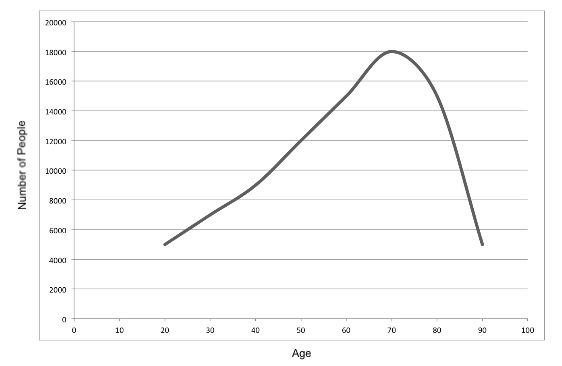IFoA IFoA_CAA_M0 - Module 0 - Entry Exam
The table below shows the distribution of the number of people in each household in a village.
Â

Â
Determine which of the following inequalities is true for the number of people living in a house.
Determine which of the statements is true about the root(s) of the following equation:
 
An insurance company sells policies where, for each policy, the policyholder pays the first £50 of the cost of any claim. A claim reported to the insurance company takes some unknown value £x.
Â
Identify which of the mathematical expressions below represents the cost in £ to the insurance company of the claim.
Calculate the total area enclosed by the x-axis and the function below, between x =Â 1.5 and x = 2.
f(x) = 2x3
An individual purchases a share in a company at a price of £45. Six months later he sells the share for £39.
Â
Calculate the percentage change in the value of the share over the six month period, correct to one decimal place.
The graph shows the frequency distribution of the age of people with a certain kind of insurance contract.
 
Describe the shape of the underlying data.
Determine and describe the extreme values of f(x,y) = -x2 - xy - 3y2
Integrate:

A)

B)

C)

D)

Consider the vector U = (3, -1, 5).
Â
Calculate the magnitude of vector U to two decimal places.
The variable s can take values between 2 and 6.
Â
Identify which of the inequalities shown can be satisfied by at least one value of s.



